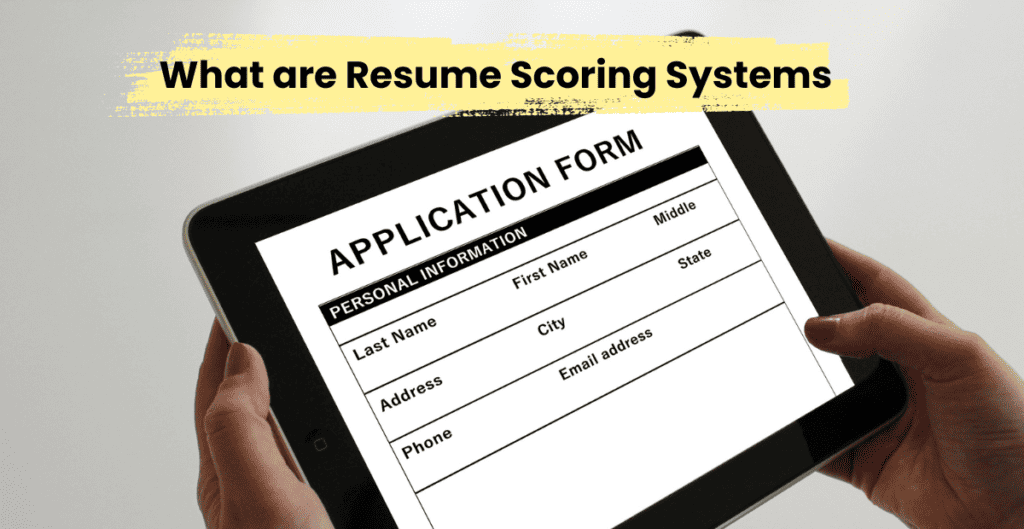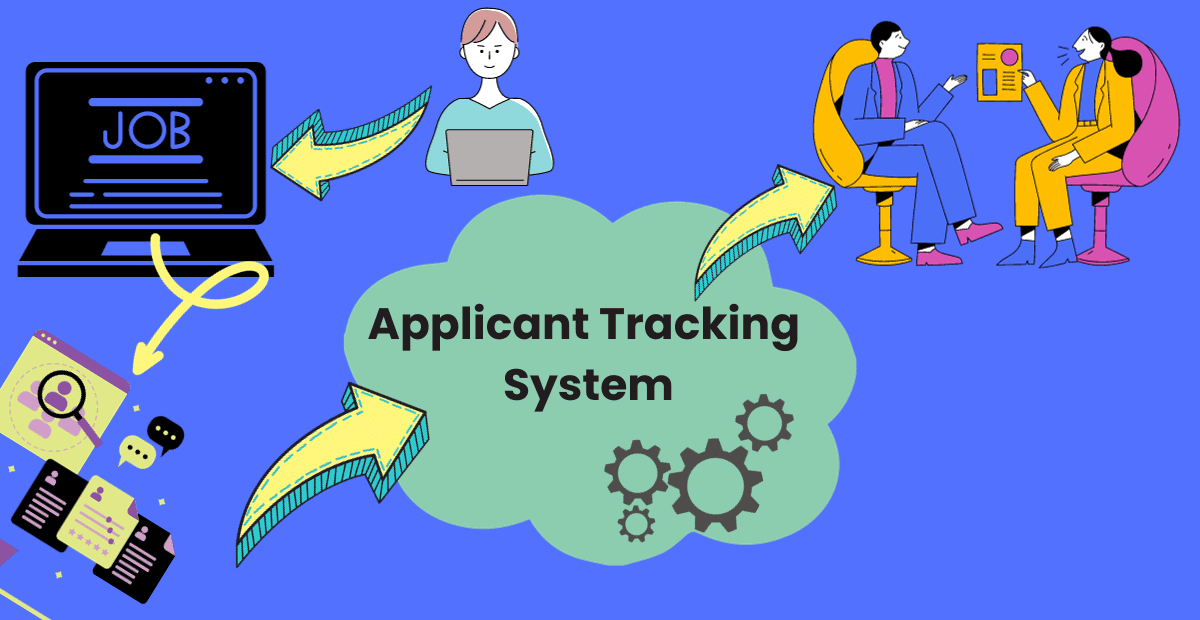What are Resume Scoring Systems?

Key Takeaway
- Resume scoring systems (ATS) use AI to screen resumes efficiently, assigning scores based on keyword relevance to streamline the hiring process.
- AI and Machine Learning enhance these systems, allowing context comprehension and continuous improvement in identifying top talent.
- Practical tips for job seekers include optimizing resumes with job-specific keywords, avoiding overuse, and formatting for ATS compatibility.
- Despite their benefits, resume-scoring systems have limitations, such as potential bias and overlooking qualified candidates, emphasizing the need for transparency and ethical considerations.
1. Understanding Resume Scoring Systems: An Overview
Resume scoring systems, also known as Applicant Tracking Systems (ATS), are software applications many employers use to streamline the hiring process. These sophisticated technologies are designed to sift through hundreds, even thousands, of resumes, scanning for keywords related to the job posting and assigning a score to each resume. In short, it is all about resume screening.
The higher the score, the better the match to the job criteria. The primary purpose is to help recruiters manage the overwhelming number of resumes they receive and highlight the most fitting candidates. In a world where time is everything, these systems can be a game-changer for HR professionals.
Though they may seem intimidating, understanding how these systems work can significantly improve your chances of landing that dream job
2. The Mechanics of Resume Scoring Systems
How Artificial Intelligence Powers Resume Scoring
Artificial Intelligence (AI) is critical in modern resume scoring systems. AI enables these systems beyond simple keyword matching, making them capable of comprehending context and semantic meaning.
AI algorithms can analyze phrases and sentences to identify a candidate’s skills, experience, and qualifications.
Furthermore, machine learning, a subset of AI, allows these systems to learn from past selections and continually refine their understanding of what makes a good candidate. This results in more accurate and fair scoring, with the system improving its ability to identify top talent over time.
Remember, while it’s important to include relevant keywords in your resume, modern ATS are increasingly looking at the entire context. Tailoring your resume to the specific job and demonstrating clear evidence of your qualifications will increase your chances of scoring highly.
Role of Machine Learning in Resume Scoring
Machine Learning (ML) plays a pivotal role in enhancing the capabilities of resume scoring systems. These intelligent systems use ML to understand the patterns and trends in successful applications, refining their scoring models to make more accurate predictions about a candidate’s suitability.
For example, they might identify that candidates with certain combinations of skills and experiences are more likely to excel in specific roles.
As the ATS software processes more resumes, its ML algorithms continue learning and improving, refining the evaluation criteria based on the success of previously selected candidates.
This continuous learning process ensures the system stays updated with evolving job market trends and candidate profiles.
So, by understanding the role of ML in ATS, job seekers can better strategize their application approach, ensuring their resumes resonate with the system’s evolving understanding of a successful candidate.
3. The importance of resume scoring systems in modern recruitment
Given the influx of job applications for every position, recruiters find it challenging to sift through each resume manually. This is where resume-scoring systems come in handy. They expedite the process and ensure a fair and objective assessment of every candidate.
By leveraging machine learning, these systems can identify qualified individuals based on the job requirements and the applicant’s experience, skills, and qualifications.
Consequently, this leads to more efficient and effective recruitment, saving time and resources for organizations and facilitating a more streamlined hiring approach.
Moreover, these systems’ continuous learning and improvement align them with the ever-evolving job market trends, making them an integral part of modern recruitment strategies.
4. The Impact of Resume Scoring Systems on Job Seekers
These systems significantly influence the job-hunting process. With the knowledge that an AI is evaluating their resumes, job seekers are encouraged to carefully construct them with relevant keywords, skills, and experiences.
The pressure to stand out in the vast pool of applications leads to an emphasis on demonstrating quantifiable achievements and tailored skillsets.
Furthermore, job seekers can benefit from these systems as they ensure a fair evaluation process, uninfluenced by human biases.
Understanding these systems can ultimately empower job seekers, helping them navigate the modern job market more effectively.
5. Practical Tips to Optimize Your Resume for Scoring Systems
Use Job-specific Keywords: Carefully read the job description to identify critical skills, qualifications, and experiences the employer seeks. Incorporate these specific keywords into your resume to increase its relevancy score.
Avoid Overstuffing: While including relevant keywords is essential, avoid overusing them. The system may flag your resume as spam if it has an unnatural frequency of certain words.
Use Both Acronyms and Full Forms: Some systems may not recognize acronyms, while others may not recognize complete forms. For example, use ‘Search Engine Optimization’ and ‘SEO’ to cover your bases.
Include Keywords in Different Sections: Spread your keywords throughout your resume, including them in your summary, skills, work experience, and education sections. This shows the system that your qualifications are comprehensive and relevant.
Formatting Tips for Higher Resume Scores
Stick to Standard Formatting: Use a clean layout with clear headings and bullet points. The system can easily read and interpret information in this format. Avoid using complex designs or images, as these can confuse the system.
Use a Standard Font: Choose a familiar, easy-to-read font like Arial, Calibri, or Times New Roman. The system can struggle to read unusual fonts, which could negatively impact your score.
Save as a .doc or .docx File: These are the best formats for ATS compatibility. Some systems have trouble parsing PDFs.
Avoid Headers and Footers: Some systems have trouble reading the information in headers and footers. Place important information within the main body of the document.
Proofread Thoroughly: Spelling and grammatical errors can affect your score. Use a tool like Grammarly to catch any mistakes before you submit your resume.
6. Limitations of Resume Scoring Systems
While resume scoring systems can be beneficial in streamlining the recruitment and screening process, it’s also important to acknowledge their limitations. For instance, these systems may overlook highly qualified candidates who don’t use the exact keywords or phrases the system is programmed to search for.
Furthermore, they may favor applicants who have figured out how to game the system over those who honestly present their skills and experiences.
They also struggle with interpreting nuances and recognizing the context in which specific skills were acquired or used.
Lastly, these systems can also be biased towards specific formats or layouts, potentially discarding resumes that stray from the standard, even if the content is outstanding. Therefore
7. Future of resume-scoring systems and what to expect
As artificial intelligence continues to evolve, we can anticipate that these systems will become more sophisticated in their ability to parse information, reducing biases towards specific formats or layouts.
They are likely to move beyond keyword recognition and develop the capability to understand phrases like a human would, allowing them to comprehend nuances and context better.
Furthermore, these systems could integrate with other digital platforms, allowing the hiring manager a more holistic view of a candidate’s capabilities beyond what’s written in the resume.
However, as these systems become more complex, the need for transparency and ethical considerations in their use will become increasingly important.
Thus, while these advancements can improve the efficiency and effectiveness of resume-scoring systems, job seekers must stay informed about these technologies to optimize their resumes accordingly.
8. Conclusion
As we conclude, we can summarize as below;
- Resume scoring systems mark a transformative era in hiring, driven by the rapid advancement of artificial intelligence.
- The evolution introduces opportunities and challenges, demanding job seekers to comprehend these systems, adapt their resumes, and stand out effectively.
- Emphasizing transparency and fairness is crucial for developers and businesses utilizing these systems to avoid unintentional biases and ensure ethical practices.
- Successful adaptation to this new era requires collaborative efforts from job seekers and hiring entities, ensuring technology is an aid rather than an obstacle in finding the perfect job match.
9. Frequently Asked Questions
Q: How do resume scoring systems calculate scores?
A: While the specific algorithm may vary from one system to another, typically, these systems analyze key elements like relevant skills, work experience, and education. They might also take into account specific keywords related to the job description.
Q: Can I optimize my resume for these scoring systems without lying or exaggerating?
A: Absolutely! It’s about highlighting relevant skills and experiences clearly and concisely. Tailoring your resume for each job application can also help. Make sure you include keywords and phrases from the job description.
Q: Do all companies use resume-scoring systems?
A: No, not all companies use these systems. They are commonly found in larger organizations or industries with high applicant volume. It’s always good to research the hiring process of the company you’re applying to.
Q: What ethical considerations are there in using these systems?
A: The primary ethical considerations include ensuring the systems do not perpetuate existing biases and are fair and transparent in assessing resumes. These systems mustn’t disadvantage any applicant based on any protected characteristics.
Q: What are resume scoring systems?
A: Resume scoring systems are automated tools, often integrated within Applicant Tracking Systems (ATS), which help recruiters and hiring managers screen and rank resumes based on specific criteria.
Q: How do recruiters use ATS for resume screening?
A: Recruiters use ATS to find and filter resumes based on keywords, skills, experience, and other qualifications that match the job requirements. This helps them identify potential candidates efficiently.
Q: What is an ATS-friendly resume?
A: An ATS-friendly resume is a format and content optimized to be easily parsed and understood by ATS systems, ensuring that the candidate’s qualifications and experience are accurately captured during the screening process.
Q: How can I create an ATS-friendly resume?
A: You can create an ATS-friendly resume by using resume templates designed explicitly for ATS, optimizing the use of keywords, avoiding graphics or fancy formatting, and ensuring your resume includes relevant content for the job.
Q: What is the difference between automated resume screening and manual screening?
A: Automated resume screening involves using software to scan and rank resumes based on predefined criteria, while manual screening involves human recruiters reviewing and assessing resumes individually.
Q: What should I consider to ensure my resume stands out in ATS?
A: To ensure your resume stands out in ATS, use an ATS-friendly resume template, include relevant keywords and skills, and format your resume in a clean and organized manner that is easy for the system to interpret.
Q: Can an ATS read all types of resumes?
A: ATS systems are designed to read and parse text-based resumes, so it’s essential to ensure your resume isn’t heavily formatted, uses standard fonts, and includes relevant content that the system can easily interpret.
Q: How can I make my resume stand out in ATS?
A: To make your resume stand out in ATS, utilize templates designed for ATS, emphasize relevant skills and keywords, and ensure your work history and qualifications align closely with the job requirements.
Q: What is the ATS resume template, and how can I use it?
A: An ATS resume template is a format specifically tailored to be compatible with ATS systems. You can use it by filling in your relevant experience, skills, and qualifications in an easily readable format by automated screening software.
